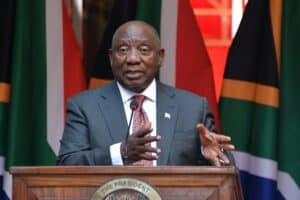Archaeologists in Sudan have reopened an ancient pyramid and extracted bones and artefacts, in order to carry out further examination including DNA tests.

The items were found in one of three burial chambers in Meriotic pyramid number 9 in Bajarawiya, a UNESCO World Heritage site where a king from the Nubian period is believed to be buried.
“Pyramid number 9 belongs to King Khalmani who reigned between 207 BC and 186 BC,” Mahmoud Suleiman, the head of a team of archaeologists, told journalists in Bajarawiya, about 250 kilometres (155 miles) north of Khartoum, late Tuesday.
The bones so far discovered are believed to have belonged to more than one person and have been shown to journalists, including an AFP reporter, by a team of archaeologists in Bajarawiya.
DNA tests should shed light on the relation between the bones, while further items are expected to be recovered from another of the pyramid’s chambers, the team said.
“In the coming days we will open” another of the three burial chambers, said Murtada Bushara, a second archaeologist from the team.
This chamber “contains a coffin,” Bushara added.
The dig is raising hopes that the remains of King Khalmani himself may be uncovered.
This is not the first time the pyramid has been the site of significant activity. American archaeologist George Reisner presided over a dig in 1923 and took artefacts back to Boston.
Sudan’s remote pyramids are not as grand as their better-known cousins in Egypt.
The first archaeological digs in Sudan took place only about 100 years ago, much later than in Egypt or Greece.






